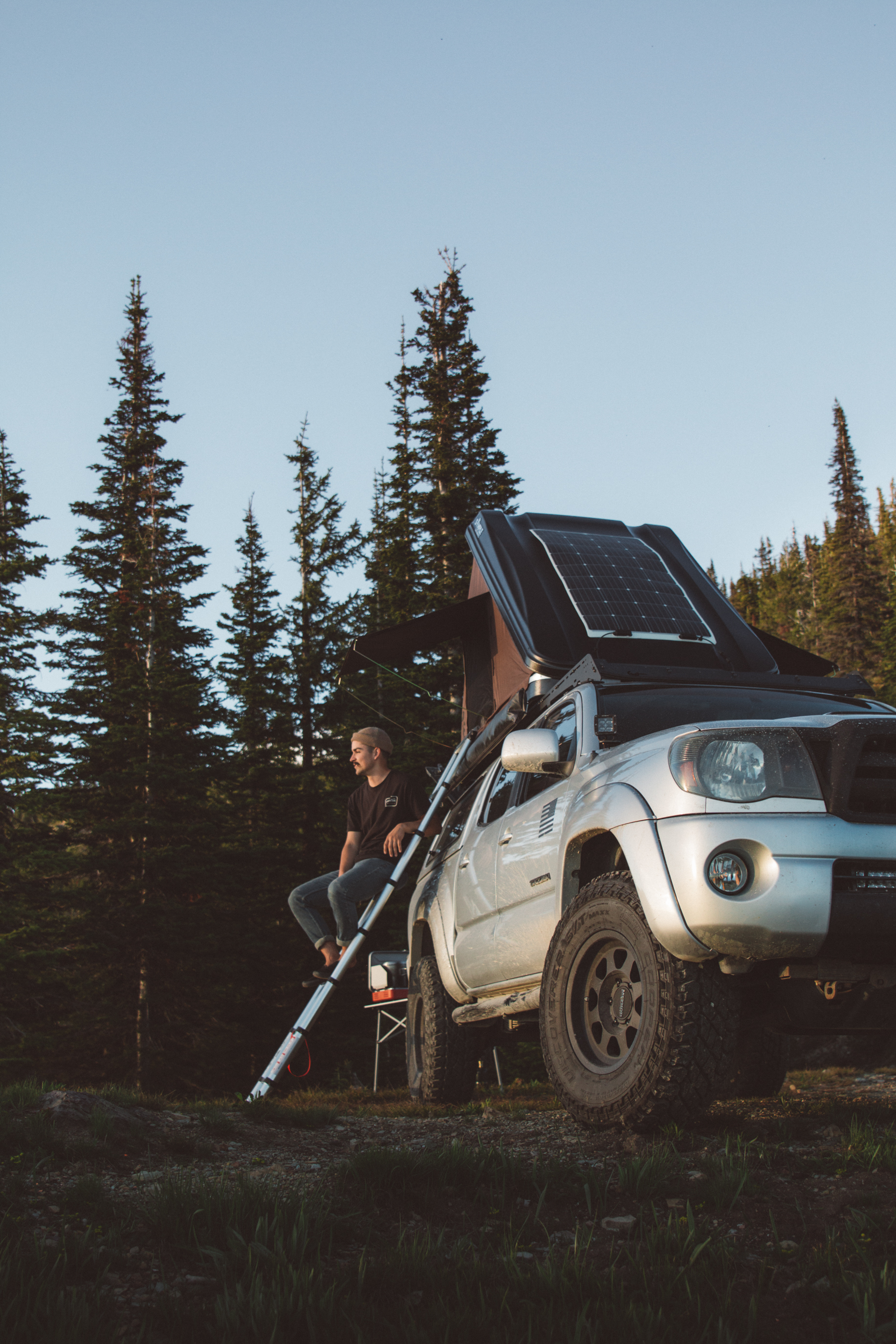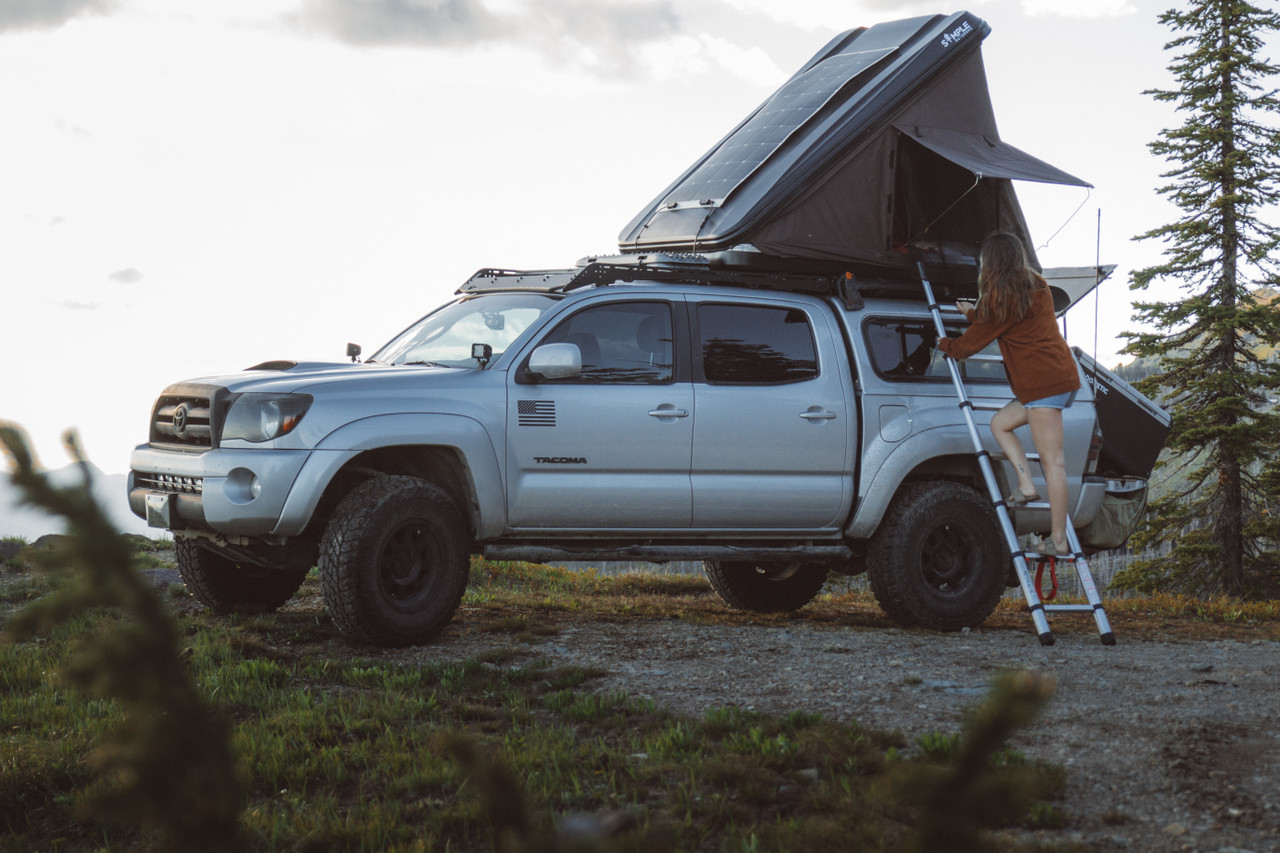What to know about flexible solar panels
Are they as durable as rigid solar panels?

With more and more people installing solar panels on their RV’s and vans, flexible solar panels are also becoming equally popular. Thanks to advancing solar panel technology, flexible solar panels are much easier to mount than traditional rigid panels and give you the ability to put your panels on non-flat surfaces. Flexible panels are thinner, more lightweight, and make solar panels nearly unnoticeable on your RV, boat, or van.
How do solar panels work?
It is helpful to understand the basics of how photovoltaic solar panels function. Panels are made up of many solar cells made of silicon. When sunlight hits those panels, they create an electric current. Panels have both a positive and a negative layer, which then creates an electric field.
Solar panels collect current, which then feeds into a charge controller. As its name suggests, charge controls which control how much current goes to a battery and prevent batteries from being overcharged. They also have the ability to shut down a system if the energy stored dips below 50%. Batteries store and produce DC power. In order to use AC appliances, such as microwaves, laptops, and phone chargers, an inverter is used to change the power from DC into AC power.
What are the differences between flexible and rigid panels?
Rigid solar panels are the most common solar panels on the market and are what you typically envision when thinking of solar panels. Flexible solar panels on the other hand, are a lightweight alternative that can flex up to 248 degrees, making them a great option for mounting on surfaces that are not flat. Renogy flexible panels are only .08 inches thick. This is a big plus if you do stealth camping and want your solar panels to remain out of sight from passersby.
Are flexible solar panels durable to withstand harsh elements?
You should rest assured knowing that Renogy’s flexible solar panels are tough and rigorously tested. Flexible solar panels are designed to withstand snow loads up to 5,400 Pa and extreme winds up to 2,400 Pa. That being said, we do not recommend walking on them. This may result in internal damage to the solar panels.
What’s the difference between monocrystalline and polycrystalline panels?
Solar panels are typically available in polycrystalline or monocrystalline options. The process used to make polycrystalline silicon is simpler and therefore costs less to produce. Polycrystalline panels, which are light blue in color, are less efficient, but they are also typically cheaper than monocrystalline. Monocrystalline solar panels, which are dark blue in color, have the highest efficiency rates and are more space-efficient than polycrystalline panels. However, they are also more expensive. You’ll notice that all of Renogy’s flexible panels are monocrystalline. This ensures you’ll have the most space-efficient panels for your installation.
What are the benefits of flexible solar panels?
Flexible solar panels weigh less than the rigid solar panels and can be installed directly on the roof of your RV, in contrast to rigid solar panels which stick up above your roof somewhat and can be trickier to place between other components on your roof. Flexible solar panels typically weigh a quarter of the weight of traditional rigid panels.
What are the benefits of rigid solar panels?
The main benefits of rigid solar panels is that they are more durable, can be mounted at angle (this increases their overall energy production efficiency), and are comparable in price to flexible solar panels. Due to the nature of plastic, flexible solar panels degrade more quickly than glass and aluminum found in rigid solar panels.
How do I install flexible solar panels?
For Renogy’s solar panel kits, we recommend consulting with an installer, electrician, or our technical support team for guidance and support. All our off-grid kits are DIY ready with a user-friendly installation process and our installation guides are available online. In traditional mounting situations for rigid solar panels, you typically need to leave a small air gap to dissipate any heat that is generated from the panels. Some installers may recommend putting a spacer behind the panel with double sided tape or velcro tape to give your panels some breathing room. The current generation of Renogy’s flexible panels have a much higher heat tolerance, which means you can directly mount them to your roof. You can also include a spacer if you prefer, and efficiency may be increased if you do include that breathing room..

How do I know what size solar installation I need?
We recommend using the Renogy solar panel calculator to help determine your specific needs. To determine what size system will best fit your needs, make a list of all the appliances and devices you plan on running. The main appliances to take into consideration when addressing energy needs may include a TV, lighting, water pump, laptop, fans, microwave, and refrigerator. The solar sizing calculator allows you to input information about your lifestyle to help you decide on your solar panel requirements. You’ll just need to know what total watts your electronics will consume, how long you plan on running devices, your charge controller efficiency, and average sun hours per day. The solar panel calculator will then be able to tell you the minimum and recommended system size, as well as the recommended battery output.
How do I care for solar panels?
Solar panels require very little maintenance. We recommend washing off the panels at least once a year to remove any dirt or other residue that may have collected, as well as brushing off any leaves that may collect on the surface of the panels. All of these practices will ensure that your panels are operating at maximum efficiency.
Conclusion
With RV and van sales going through the roof in 2020, solar panels on mobile applications is also at an all-time high. Flexible solar panels are an ideal solution for people wanting minimally noticeable and lightweight solar panels. Combine that with their ability to be mounted on non-flat surfaces and operate at high efficiencies, and they’re a great solar panel option for many individuals.







